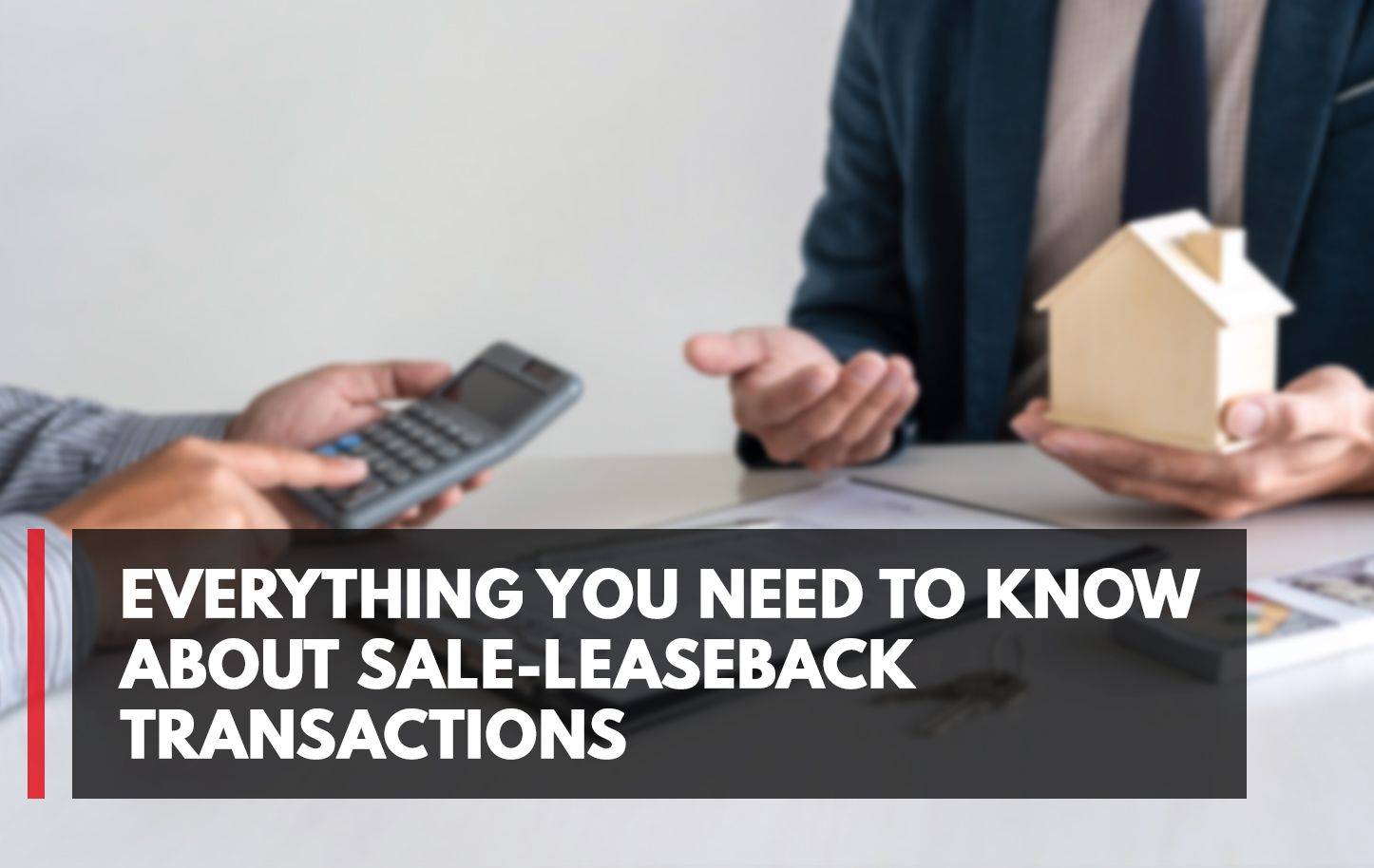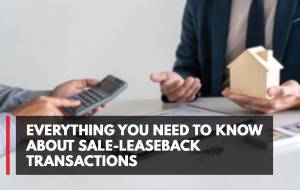
Everything You Need to Know About Sale-Leaseback Transactions
Published At: Fri, 09/10/2021 - 02:17
If you are a property manager or into real estate, you must have encountered the term “sale-leaseback transaction” at one point or another. Whether you are a seller, buyer, or lessee, you may also be familiar with the term.
What exactly is a sale-leaseback transaction, and how does it work? Is it the kind of deal you would want yourself into? Is it beneficial to both the buyer and the seller? Here are some of the most important things you need to know about a sale-leaseback transaction.
What is a Sale-Leaseback Transaction?
A sale-leaseback transaction is when one party sells an asset or property to another and then leases it back from the buyer. The seller becomes the lessee (renter), and the buyer becomes the lessor (landlord).
The terms for the purchase agreement and the lease agreement are discussed and agreed upon by both parties beforehand, so the two agreements are typically executed at the same time. The seller or lessee will also provide some type of guarantee that they’ll be able to repurchase their asset or property at its current market value at the end of the lease term.
Large-scale construction companies, real estate developers, aviation businesses, and the automotive industry will often opt for sale-leaseback transactions.
Benefits of Sale-Leaseback Transactions
A sale-leaseback transaction might seem counterintuitive at first. Why sell an asset you already own when you’re planning to keep using it and rent it anyway? However, this type of transaction can be useful in several ways.
It Frees Up Additional Capital
It provides the seller-turned-tenant with a way to immediately monetize or liquidate an asset, while still retaining the right to use said asset. The buyer will then be able to acquire the asset for a lower price.
The lessee can use the money they receive from a sale-leaseback transaction to invest in other ventures. The lessor is also able to take advantage of a more favorable capital interest rate than they might get from an unrelated lending institution, while the lessee gets some financial relief for their asset or property that would otherwise be lost to foreclosure or bankruptcy proceedings if traditional financing was used instead.
It's Good For Long-Term Investments
A sale-leaseback can help with asset-liability issues by assigning the risk of ownership and any losses involved with a given asset to another party. It provides the lessee with a way to reduce risk and increase long-term security for an asset without giving up complete ownership of it.
Meanwhile, the buyer or lessor acquires ownership of the asset and is guaranteed some type of income stream coming from the lessee.
It's A Good Alternative To Equity Financing
It is often used as an alternative to equity financing when the lessor wants some form of collateral. This is because a sale-leaseback transaction provides an asset that can be easily repossessed in case of default or noncompliance with the terms and conditions laid out by both contracts.
Drawbacks of Sale-Leaseback Transactions
While useful in many ways, this type of transaction isn’t without its drawbacks.
It’s More Expensive
Leasing companies charge a higher interest rate to cover the risks and the costs of maintaining the asset or property in question. This often results in increased monthly payments for the seller or lessee. There’s also a higher initial cost because they will have to pay leasing fees, maintenance costs, and interest on the lease.
In addition, sale-leaseback transactions are usually tailored to meet both the buyer and seller’s specifications, aims, and needs. High administrative expenses, more overhead costs, and lengthy discussions spent hashing out the terms and conditions of the transaction are to be expected.
It’s Not Suitable for All Types of Property
The property must be a type that can be leased out. If the property or asset is too old, too expensive to maintain, and/or has a short lease term, a sale-leaseback transaction isn’t advisable.
Some industries, like manufacturing or retailing, are more suited to sale-leaseback transactions than other industries, like education or healthcare. Similarly, commercial buildings used for offices, or logistics and storage facilities like warehouses are more likely to be sold and leaseback than residential properties like homes or apartment buildings.
It Can be Risky
Just because a sale-leaseback transaction offers a more balanced risk profile doesn’t mean it’s entirely devoid of risks. Since the seller becomes the lessee and no longer owns the asset or property, they’ll only have limited control over it. They are also essentially locked into a contractual lease agreement for an extended time. If the rental market depreciates, the lessee will still have to pay the market rent previously agreed upon.
It’s risky for the lessor too. Although the lessor owns the asset or property, their investment and their income stream are dependent on the lessee. If the lessee defaults on the lease, then the lessor will have to find a new, credible lessee, which can take time. If the lessee files for bankruptcy, the lessor will be considered a general creditor instead of a secured creditor.
Taxes are another thing to keep in mind. The Internal Revenue Service (IRS) may consider the sale-leaseback transaction as a regular financing transaction instead of a sale-leaseback, especially if there’s an agreement to repurchase the asset or property after the leasing period ends.
Is a Sale-Leaseback Transaction Right For Me?
Consider the advantages and disadvantages of this kind of transaction, weigh your options carefully. While a sale-leaseback may seem like an attractive option at first, traditional financing methods may suit you better. It can provide you with quick liquidity and some degree of flexibility, but it does not offer any tax advantages like traditional financing or equity financing might.
Consider the industry as well, as there can be issues and benefits involving sale-leaseback transactions that are unique to your field. The concerns you’ll have regarding an asset like specialized, heavy machinery will differ from the concerns you’ll have regarding a plot of land, for instance.


